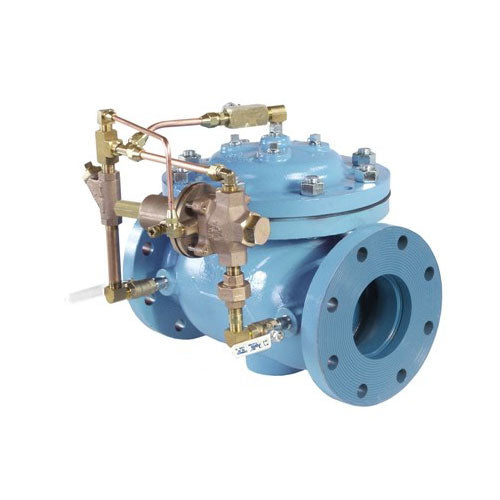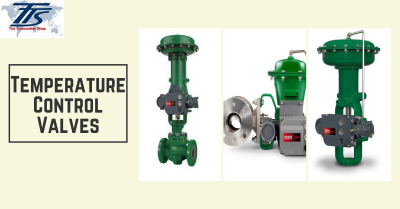Maximizing System Control with High-Performance Control Valves
Maximizing System Control with High-Performance Control Valves
Blog Article

Maximize Power Financial Savings and Convenience With Advanced Structure Automation Controls
In the world of contemporary architecture and center management, the assimilation of innovative building automation regulates stands as an essential improvement. The convergence of innovation and sustainability has actually birthed a brand-new age where energy effectiveness, comfort optimization, and functional streamlining are no much longer possible facts yet distant aspirations. By utilizing the power of automation, buildings can adjust, respond, and progress in manner ins which were as soon as inconceivable. The capacity for substantial power cost savings and improved comfort is not just a pledge yet a possibility waiting to be satisfied. This paradigm shift in structure monitoring holds the essential to opening a world where ecological conscientiousness and resident well-being harmoniously exist together within the wall surfaces of our structures.
Energy Performance Perks
Power effectiveness advantages can significantly minimize power consumption and operational prices in structures. By carrying out energy-efficient methods and modern technologies, building owners and operators can attain substantial cost savings while likewise contributing to ecological sustainability. Among the key advantages of enhancing energy performance in buildings is the reduction of utility expenses. Energy-efficient systems, such as sophisticated structure automation controls, can enhance the usage of sources like air conditioning, lighting, and heating, bring about reduced power expenditures in time.
In addition, boosted energy efficiency can prolong the life expectancy of building devices and systems. By running much more successfully, cooling and heating systems, light, and various other building components experience much less deterioration, leading to decreased maintenance and substitute costs. In addition, energy-efficient structures frequently regulate higher home worths and rental prices, supplying long-term economic benefits to proprietors.
In addition, energy performance can boost resident comfort and performance. Properly regulated interior settings with optimal illumination and thermal problems produce a more enjoyable and conducive work area, bring about boosted employee contentment and performance. Generally, the power performance advantages related to innovative structure automation controls are multifaceted, encompassing price financial savings, environmental stewardship, and owner health.
Boosted Convenience Control
Enhancing comfort control in building settings needs an innovative integration of advanced automation systems for optimum passenger well-being. By making use of innovative structure automation controls, facilities can tailor the interior setting to meet the specific demands and preferences of residents. control valves.
Improved convenience control surpasses basic temperature modifications. It consists of functions such as tailored settings, tenancy sensing units, and all-natural light utilization to create a dynamic and receptive setting. By incorporating these advanced controls, structures can not only improve convenience yet likewise enhance power performance by optimizing system procedures based upon actual tenancy and use patterns. Inevitably, prioritizing resident comfort via advanced automation systems leads to a much more satisfying and healthier interior setting.
Operational Effectiveness Improvements

Furthermore, the application of real-time tracking and analytics tools allows structure operators to identify power ineffectiveness and functional abnormalities without delay. By continually checking energy usage patterns and system efficiency metrics, modifications can be made in real-time to maximize energy consumption and ensure peak operational performance. control valves. Furthermore, integrating demand reaction methods into structure automation controls can additionally boost functional efficiency by dynamically readjusting power usage based on grid conditions and pricing signals
Indoor Environment Optimization
Effective interior climate optimization is a fundamental element of building automation controls, making certain passengers' comfort and health while making the most of power cost savings. By utilizing sophisticated sensing units and controls, constructing automation systems can constantly change and check temperature level, humidity levels, air top quality, and air flow to develop an optimal indoor atmosphere. Maintaining consistent and comfortable conditions not just boosts owner contentment however also increases efficiency and overall wellness.
Interior climate optimization additionally plays an important function in energy efficiency. By fine-tuning home heating, ventilation, Check Out Your URL and air conditioning systems based upon real-time information and occupancy patterns, developing automation controls click for more can substantially reduce energy consumption - control valves. For example, implementing methods such as demand-controlled air flow and thermal zoning can aid lessen energy waste while making certain that each location of the structure receives the essential conditioning.

Sustainable Setting Production
Structure automation controls not only optimize indoor environment problems for energy efficiency and owner comfort yet additionally lay the foundation for producing a lasting environment with critical monitoring of systems and sources. By integrating advanced structure automation innovations, such as sensors, actuators, and smart software application, facilities can change and keep an eye on energy use in real-time to reduce waste and reduce their carbon impact. These systems allow anticipating maintenance, identifying possible concerns before they escalate and enhancing equipment performance to improve longevity and effectiveness.
Furthermore, lasting setting development expands past power management to incorporate water conservation, waste decrease, and indoor air quality renovation. Structure automation controls can regulate water use, identify leaks, and make sure proper waste disposal methods, adding to general sustainability initiatives. In addition, by controlling and monitoring air flow and filtering systems, these innovations boost occupant wellness and performance while reducing energy usage linked with HVAC procedures.
Verdict
To conclude, progressed structure automation regulates offer significant benefits in terms of power savings, comfort control, functional efficiency, interior climate optimization, and developing a lasting environment. By carrying out these controls, buildings can accomplish ideal performance while decreasing power consumption and boosting passenger comfort. It appears that making use of sophisticated automation innovation is important in enhancing structure performance and developing an extra lasting future.
Energy efficiency advantages can considerably minimize energy navigate to this website intake and functional prices in buildings. In general, the power efficiency advantages connected with sophisticated structure automation controls are multifaceted, incorporating expense savings, environmental stewardship, and resident wellness.
In addition, integrating demand reaction strategies right into structure automation controls can further enhance operational performance by dynamically readjusting power usage based on grid problems and prices signals.
Structure automation controls not only maximize interior climate conditions for energy performance and occupant convenience however also lay the foundation for developing a lasting environment through calculated monitoring of systems and sources.In conclusion, progressed structure automation manages deal significant advantages in terms of power financial savings, convenience control, functional efficiency, indoor climate optimization, and producing a sustainable setting.
Report this page